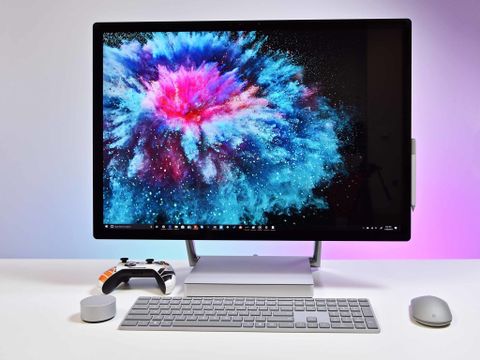
Let's get one thing straight about the new Surface Studio 2 – it's not a PC for your average user, nor someone looking to stretch their dollar. Instead, Microsoft's second version of its giant tablet-like PC is built for professional architects, engineers, designers, and artists. But if you look at one with envy thinking it could be the best experience on a Windows 10 PC, well, you would be right.
While the price and the lackluster processor is off-putting, these are beside the point of the Surface Studio 2. It represents all that is Windows 10 in 2018 in single, minimalist expression that is powerful enough for gaming.
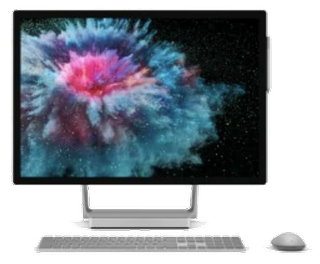
From $3,499 at MicrosoftBottom line: While the 7th gen Intel processor is disappointing the powerful NVIDIA GTX 1070, faster storage solution and overall improved user experience make the Surface Studio 2 still one of the most amazing PCs ever to be created. It just comes at a steep price.
For
- Best PC display on the market.
- Serious GPU horsepower.
- Faster SSD and quality RAM.
- Everything is now instant on.
- Unique drawing and touch experience.
Against
- CPU is old and not hexa-core.
- No Thunderbolt 3.
- Extremely expensive.
- Not upgradeable.
Same design, new hardware
What's new with Surface Studio 2?
Following the trend of Surface Pro 6 and Surface Laptop 2, the new Surface Studio 2 is an evolution more than a radical redesign.
For that, it means ditching the poor hybrid solid-state drive (SSD) and hard-disk storage solution for a zippier pure-SSD one. It's also about getting rid of the old mobile GPU for a proper graphics card that justifies the very high price tag.
Here's what's new:
- Intel i7-7820HQ processor.
- NVIDIA GTX 1060 or GTX 1070 GPU.
- Toshiba NVMe SSD in 1 or 2 TB options.
- The display is 38 percent brighter with 22 percent increased contrast.
- USB Type-C instead of a mini DisplayPort.
- No Core i5 version anymore.
Other than that Surface Studio 2 has the same chassis design, same Marvel Wi-Fi chipset, same Surface camera, and overall look and feel of its predecessor.
There are only three models all with the same Core i7 processor, but two different GPUs. The $3,499 model (16GB of RAM, 1TB storage) uses an NVIDIA GTX 1060 while the $4,199 (32GB of RAM, 1TB storage) and $4,799 models (32GB of RAM and 2TB storage) both use an NVIDIA GTX 1070.
By the numbers
Surface Studio 2 specifications
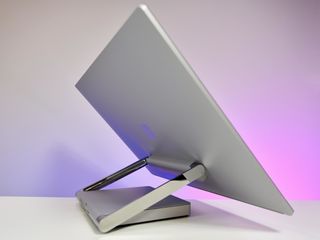
For 2018, the Surface Studio 2 keeps things minimal with just four USB Type-A ports, Ethernet, headphone jack and the new Type-C port (which does not support Thunderbolt 3).
| Category | Specification |
|---|---|
| Display | 28-inch Pixel Sense display10 point multi-touch)sRGB, DCI-P3, and VividIndividually color-calibrated display |
| Display resolution | 4,500 x 3,000 (192 PPI) |
| Software | Windows 10 Pro |
| Processor | 7th Gen Intel Core i7-7820HQ |
| Storage | 1TB or 2TB SSD |
| Memory | 16GB or 32GB DDR42,666 MHz |
| Graphics | NVIDIA GTX 1060 with 6GB of GDDR5NVIDIA GTX 1070 with 8GB of GDDR5 |
| Front camera | 5.0MP front-facing camera with 1080p HD videoWindows Hello facial authentication |
| Speakers | Stereo 2.1 speakers with Dolby Audio Premium |
| Ports | 4 x USB 3.0 (one high power port)Full-size SD card reader (SDXC)1 x USB Type-CGigabit Ethernet port3.5 mm headphone jack |
| Accessories | Surface Keyboard, Surface Pen, Surface Mouse (all in box) |
| Security | TPM 2.0 |
| Pen | Surface Pen |
| Weight | 21lbs (9.56 kg) |
A stunning visual journey
Surface Studio 2 display
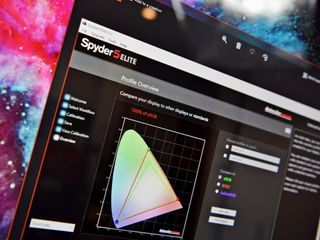
Arguably, the most critical feature of the Surface Studio 2 is its display, so it's great to see some improvements to it compared to the original version. The bar is already set high considering there is no other display like this on the market with support for inking, 3:2 aspect ratio and a resolution just over 4K.
It's a glorious and stunning achievement.
For Surface Studio 2 the display is noticeably brighter as it now boosted to around 600 nits (we measured 588 nits to be precise). That's around the minimal levels to achieve HDR although this is not a certified HDR display.
Contrast is also improved in our measurements, which also revealed 100 percent sRGB color accuracy and 90 percent Adobe RGB. Microsoft notes that each Surface Studio 2 is color calibrated at the factory. Of course, some users may want to fine-tune for their own needs.
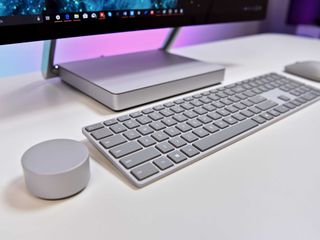
Color profiles include sRGB, DCI-P3, and Vivid, with the last one making things a bit punchier with higher contrast.
While there are more color accurate, high-resolution displays on the market – some of which run $800 or more – none also support touch or inking, nor move into a drafting table-like position.
The hinges that connect the display to the base are still polished metal that is designed in such a way as to never reflect light at your eye. This attention to detail is what makes Surface Studio 2 just as much art as a PC. The "floating display" works amazingly well as it lets you move the display with only one hand to any position. All the cables for the screen, touch input, camera, infra-red lens, and audio all go through those hinges too.
Old CPU, awesome GPU
Surface Studio 2 hardware
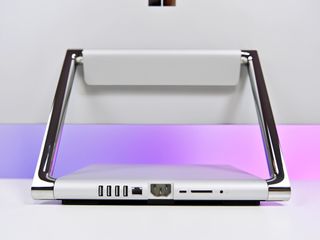
The base of the Surface Studio 2 is still the same size, which is about half that of a full gaming laptop. It packs the GPU, CPU, SSD, motherboard, ports, and a fan into a very compact area.
Ports are all in the rear, including the SD card slot. This is a design-over-function choice so that all visible holes are never seen directly by the user. It's not terrible, but if you are used to using or removing external peripherals, you will want to invest in an extender.
The new Type-C port is decent. It can handle display out, data, audio, charging, and more. Connecting a hub up to it makes it even more useful. The Type-C replaces a mini DisplayPort, which was helpful for daisy-chaining displays to the Surface Studio. Users now will need to either use a new monitor that supports Type-C or pick up a Type-C hub with multiple display outputs to achieve the same result.
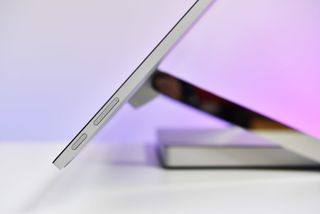
You still cannot use the Surface Studio 2 as a dummy display. Connecting the Surface Go to the Surface Studio 2 via Type-C lets the Surface Studio 2 charge the Surface Go.
Windows Mixed Reality headsets will require an HDMI-to-Type-C converter with the secondary cable going to one of the four USB Type-A ports. The Type-C port when used as a hub can't alone power a Windows Mixed Reality headset, which is a shame. Nonetheless using Windows Mixed Reality on the Surface Studio 2 was a blast with the performance set to the highest level with no hiccups.


Heat and fan noise are not too different compared to the previous Studio. Temperatures peak at around 145 degrees F (63 degrees C) as hot air is vented to the right of the computer base. Normal temps hover approximately 90 to 100 degrees F (32 to 38 degrees C) when idle or for light computing.
Fan noise is best described as audible, but not loud or annoying if sitting in front of the Surface Studio 2. The noise levels are around 38 dB (like a refrigerator hum) most of the time during light computing. For gaming, the fans will get significantly louder peaking around 47 dBs (just below a house fan). The tone of the fan though is not high-pitched; it's more of a whooshing, which is preferred.
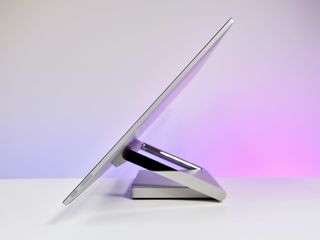
The front camera is the same as used in previous Surfaces at 5MP and a full HD video resolution. It's an excellent camera, but at this price point, you might as well splurge for the superior Logitech BRIO 4K if you're serious about conference calls.
Windows Hello works brilliantly and is faster than the last generation. That is likely due to some other modifications like the storage and the overall improved system responsiveness, but coming out of sleep the Surface Studio 2 takes just 2 seconds. Again, it's experiences like these that add up to set the Surface Studio 2 apart from other all-in-one PCs. It feels like it is always on with no waiting.
A mini powerhouse
Surface Studio 2 benchmarks
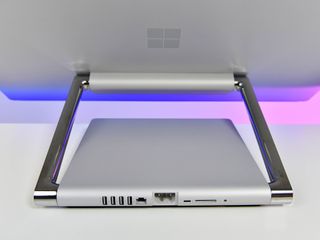
The overwhelming improvement around the Surface Studio 2 involves that boost in the GPU and the new SSD. The processor is almost an afterthought giving just a small increase over the previous version.
CPU
The Intel 7th generation Core i7-7820HQ is almost two-years old at this point. As a 45W chip it was used in high-end laptops in the 15-inch workstation range (not Ultrabooks). It's an OK processor with top speeds around 3.9GHz.
Geekbench 4.0 benchmarks (higher is better)
| Device | CPU | Single core | Multi core |
|---|---|---|---|
| Surface Studio 2 | i7-7820HQ | 4,443 | 15,772 |
| Surface Studio 1 | i7-6820HQ | 4,200 | 13,323 |
| Surface Book 2 | i7-8650U | 5,036 | 14,237 |
| Dell XPS 15 (9570) | i7-8750H | 5,002 | 21,761 |
| Surface Laptop 2 | i5-8250U | 4,203 | 13,233 |
| Surface Laptop | i7-7660U | 4,714 | 9,535 |
| Surface Pro 6 | i7-8650U | 5,048 | 13,869 |
| Surface Pro 5 | i7-7660U | 4,513 | 9,346 |
GPU
The GTX 1070 is a beast of a GPU, and it will be good for many years. Even the lower-end Surface Studio 2 packs an admirable GTX 1060, which is about 20 percent less powerful, but still miles ahead of the GTX 980M, which is quite meager by comparison.
Geekbench 4.0 OpenCL (higher is better)
| Device | GPU | Compute score |
|---|---|---|
| Surface Studio 2 | GTX 1070 | 170,827 |
| Surface Studio 1 | GTX 980M | 85,580 |
| Surface Studio I | GTX 965M | 53,685 |
| Surface Book 2 | GTX 1060 | 138,758 |
| Dell XPS 15 (9570) | GTX 1050 | 76,948 |
| Surface Book | GTX 965M | 64,108 |
| Surface Laptop 2 | UHD 620 | 35,473 |
| Surface Pro 6 | UHD 620 | 36,283 |
| Surface Pro 5 | Iris 640 | 30,678 |
SSD
Not only did Microsoft use a pure-SSD storage solution, but the Toshiba drive is quite good with 3,000 MB/s read speeds – more than doubling the last version.
CrystalDiskMark (higher is better)
| Device | Read | Write |
|---|---|---|
| Surface Studio 2 | 3,094 MB/s | 952 MB/s |
| Surface Studio | 1,327 MB/s | 512 MB/s |
| Surface Book 2 | 2,428 MB/s | 730 MB/s |
| Surface Laptop 2 | 1,509 MB/s | 811 MB/s |
| Surface Pro 6 | 1,632 MB/s | 814 MB/s |
| Surface Book | 1,018 MB/s | 967 MB/s |
PCMark
PCMark is more CPU-heavy, which is why the Surface Studio 2 closely matches the score of the Surface Book 2. That's not terrible, but it is what you get when you jam so much hardware into a tiny space.
PCMark (Home Accelerated 3.0)
| Device | Score |
|---|---|
| Surface Studio 2 | 3,374 |
| Surface Studio 2 | 3,260 |
| XPS 15 (9575) | 4,451 |
| Surface Book 2 | 3,399 |
| Surface Laptop 2 (i5) | 3,451 |
| Surface Pro 6 (i7) | 3,451 |
3DMark
Timespy is a GPU-intensive test, and here you can see the Surface Studio 2 almost matches that of the Razer Blade Pro – a 17-inch gaming laptop with a GTX 1080. Not bad at all.
3DMark (Time Spy 1.0; Higher is better)
| Device | Score | GPU |
|---|---|---|
| Surface Studio 2 | 5,250 | GTX 1070 |
| Razer Blade Pro | 5,591 | GTX 1080 |
| Surface Book 2 | 3,538 | GTX 1060 |
| Surface Studio | 2,862 | GTX 980M |
| Surface Studio | 1,531 | GTX 965M |
The i7-7820HQ's quad-core architecture is good for a heavier payload, but it pales to the current 8th generation Intel which goes beyond 4.0 GHz and has six-cores. More threads may not matter for general productivity, but for those who do a lot of data crunching or rendering that spans long durations, those extra cores would make a difference.
It's a shame that Microsoft could not put in an 8th generation processor as it would have added even more power to the Surface Studio 2 and made it more valuable for years to come. Still, if you do GPU-intensive tasks, the GTX 1060 or GTX 1070 is a juggernaut.
The RAM is no slouch, and it is DDR4 at 2,666MHz and available up to 32GB. When combined with the quality SSD, GPU, and acceptable CPU the overall feel of the Surface Studio 2 is so far ahead of the original one it's hard to quantify.
Fragging for fun
Surface Studio 2 as a regular or gaming PC
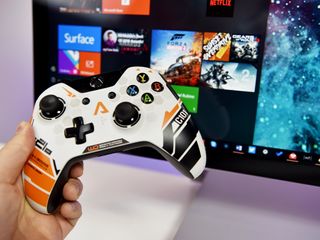
The Surface Studio 2 is a professional-level PC designed for as a specific audience of users. The pricing and feature set don't lend itself to your regular consumer as a realistic purchase. Still, for those with deep pockets and who's hearts flutter when they see the Surface Studio 2 the question is obvious: Is it any good as a regular or gaming PC?
The answer is a resounding yes.
Because Microsoft finally ditched the slow hybrid-storage solution in addition to adding a real GPU the Surface Studio 2 is one of the fastest desktop PCs – as far as getting work done, not raw power. Combined with the enormous 28-inch touch display which has the best visual accuracy of any PC display I have used, the relatively quiet fan and the excellent audio the Surface Studio 2 is everything a desktop PC should be. It's a completely immersive experience.

Microsoft crammed four speakers (two on the right, two on the left) in the display of the Surface Studio 2 and a subwoofer in the base. There are no speaker grills or visible. That may seem trivial, but it's that kind of craftsmanship that is absent from any other desktop PC. It's also a hidden cost that helps drive up the price of the Surface Studio 2, but one less thing to purchase and it keeps a clean look.
The Surface Studio 2 is a completely immersive experience
For those who already use a Surface product the familiar 3:2 aspect ratio is unique when blown up to 28-inches. The screen is large enough to work comfortably with two apps side-by-side (split view) and is ideal for productivity.
Gaming may seem an odd thing to brag about, but Microsoft did again include Xbox Wireless Controller support. It uses Microsoft's proprietary wireless connection (instead of Bluetooth) which also enables haptic feedback (rumble support) and the ability to use the headphone jack on the controller to be truly wireless.
Because of the NVIDIA GTX 1070, the Surface Studio 2 handled any game I threw at it. Compared to original Surface Studio with its (at the time) top-end GTX 980M, the new Studio 2 blows it away. Here is a comparison using Gears of War 4 (Microsoft Store)"
Gears of War 4
| Device | GPU | Resolution | Graphics | Frame rate |
|---|---|---|---|---|
| Surface Studio 2 | GTX 1070 | 2160x1440 | Ultra | 75 FPS |
| Surface Studio | GTX 980m | 1920x1280 | Ultra | 49 FPS |
| Surface Studio | GTX 965m | 1920x1280 | Ultra | 30 FPS |
| Surface Studio | GTX 980m | 1920x1280 | High | 63 FPS |
| Surface Studio | GTX 965m | 1920x1280 | High | 38 FPS |
| Surface Studio | GTX 980m | 1920x1280 | Med | 70 FPS |
| Surface Studio | GTX 965m | 1920x1280 | Med | 42 FPS |
Not only does it now hit 75 frames-per-second (FPS), but it's doing it at a significantly higher resolution than the maxed-out Surface Studio 1 at just full HD.
Playing Destiny 2 also yielded fantastic results with a vertical-synced 60 FPS at 3,000 x 2,000 resolution with settings at high and ultra. Native resolution is also doable though frame rates drop to between 35 and 45 FPS – which is still playable.
Rise of the Tomb Raider (UWP)
| Device | GPU | Resolution | Graphics | Frame rate |
|---|---|---|---|---|
| Surface Studio 2 | GTX 1070 | 4500x3000 | High | 30 FPS |
| Surface Studio 2 | GTX 1070 | 1920x1440 | Very High | 74 FPS |
| Surface Studio | GTX 980m | 1920x1440 | High | 56 FPS |
| Surface Studio | GTX 965m | 1920x1440 | High | 33 FPS |
| Surface Studio | GTX 980m | 1920x1200 | High | 63 FPS |
| Surface Studio | GTX 965m | 1920x1200 | High | 39 FPS |
The same story is found with Rise of the Tomb Raider, which can play at native resolution with graphics set to high while just reaching 30 FPS. Dialing it down to 1920x1440 the 74 FPS of the Surface Studio 2 at very high graphics blows away the 56 FPS of the older version, which is only set to high graphics.
If all you want to know is if the Surface Studio 2 can now really game, it absolutely can
Other games like Sunset Overdrive and Forza Horizons 4 look stunning and play with graphics set to high too.
Of course, there's a lot more to a gaming PC than just performance. Having a 144Hz or 240Hz display instead of 60Hz found here goes far when playing first-person shooters. And for the price, you could easily build a much more powerful rig. Nonetheless, doing it yourself yields a PC with an abundance of messy cables, larger footprint, external speakers, and a display that will never come close to that of the Surface Studio 2 (forget inking and touch).
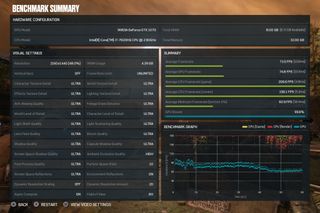
But if all you want to know is if the Surface Studio 2 can now act like a real gaming PC then consider it confirmed. It's an awe-inspiring because of that display.
A stunning achievement
Surface Studio 2: The bottom line
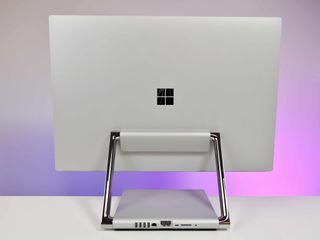
The Surface Studio 2 may not look so different from the first version, but the internal changes effectively re-make the computer. There is no longer any lag from a spinning hard-disk drive, the mobile graphics processor is gone, and even the DDR4 RAM is respectable.
The GTX 1070 found in the mid- and upper-tier Studio 2 is the sweet spot for graphics. It's powerful enough for serious data crunching or high-end gaming, yet Microsoft was able to cool it down while not melting your desk or using a loud fan.
The processor is the biggest letdown. Six cores are always better than four, and it would make swallowing the $3,500 starting price easier. Nonetheless, in day-to-day usage and gaming, I can't say that the CPU ever caused me frustration. Everything about the Surface Studio 2 – especially compared to the original – is just faster. Putting aside comparison to the old version, the Surface Studio 2 even holds up against my HP Omen gaming desktop setup.
The Surface Studio 2 is the ultimate PC to experience Windows 10
Getting fixated on specifications (like the lack of Thunderbolt 3) is easy to do, but it negates the main point of Surface: enjoy the thing. I find it difficult to believe someone would find fault with the actual performance of the Surface Studio 2. Like all Surface devices, the Studio 2 is about how the culmination of its parts that result in a profoundly unique and satisfying experience. That's accomplished here.
That said, the Surface Studio 2 pricing is absurd. Starting at $3,500 (the model tested for this review is $4,200) is so much more than a self-built kit. But again, such an approach misses many hidden costs. For its ridiculous price, the Surface Studio 2 at least includes a Surface Pen ($99), Surface Keyboard ($75), Surface Mouse ($50), 2.1 speaker system, GTX 1070 GPU ($450), 32GB of RAM ($230), and a 28-inch color-accurate 4K+ touchscreen — all in one neat package.
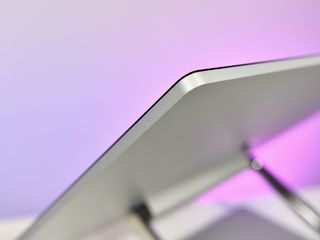
You're paying for a one-of-a-kind, minimalist PC that just has no rivals in the computing world, and for some people that is worth the cost. If you're not one of those people, that's OK too.
It's important to note that no much how much money you save in buying another system or making your own it will never do what the Surface Studio 2 does with its hinged display. Nor can you buy any screen that looks this good in this form factor.
If none of that matters to you, then the Surface Studio 2 should not even be a consideration, but for those who need such a setup, they will undoubtedly be amazed. The Surface Studio 2, like all this year's Surface releases, is incredibly close to perfection. There are a few areas for improvement like the CPU and Thunderbolt 3, but otherwise, the Surface Studio 2 is, for now, the ultimate desktop PC to experience Windows 10.

There's nothing like it.
Featuring an NVIDIA GTX 1070 GPU and brighter display the Surface Studio 2 now performs as you would expect. The one-of-a-kind display and PC experience are pricey, but Surface Studio 2 is still incomparable to any other computer in the world.

Daniel Rubino is the Editor-in-chief of Windows Central. He is also the head reviewer, podcast co-host, and analyst. He has been covering Microsoft since 2007, when this site was called WMExperts (and later Windows Phone Central). His interests include Windows, laptops, next-gen computing, and watches. He has been reviewing laptops since 2015 and is particularly fond of 2-in-1 convertibles, ARM processors, new form factors, and thin-and-light PCs. Before all this tech stuff, he worked on a Ph.D. in linguistics, watched people sleep (for medical purposes!), and ran the projectors at movie theaters because it was fun.
